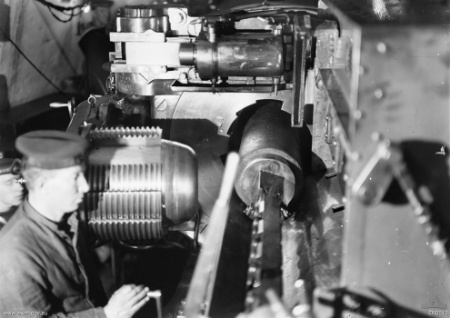You cut it by putting a cutter on a male rod rod or guide and the rod goes down the bore. The cutter then flies up and down the rod turning as it does so. You can use multipoint cutters, or single point cutters and index the guide round, or a combination, whichever led ot less distortion in that process. IIRC they indexed to cut opposite grooves.
Thats fine for a constant twist, but if you need an accelerating twist as in short barreled high velocity aircraft guns, then you attach a cam to the guide, which increases the rate of twist towards the muzzle where acceleration is less. Reduces inertial loads on long high payload projectiles (a cannonshell), which because of their length need a high spin rate to stabilise the projectile, and you want to keep the barrel short for weight purposes
You can broach them – the Americans do this in final sizing which also stretches the innermost layer beyond its elastic limit, Creates a compressive stress which needs to be overcome before the barrel expands, so allowing for a stronger barrel for less wall thickness. We achieve the same effect after cutting using hydraulic pressure, and we call it auto frettage.
Whitworth achieved it latterly by wire winding, so with naval ordnance you are actually looking at a cotton reel or bobbin – a jacket laid over the wire. Another advantage was to act as an insulator – naval guns on big ships fired in broadside – in a crosswind effectively. So stiffness without being stupidly heavy is an advantage, and that construction reduced thermal distortion- and maintained the pointing line in hot barrels.
Nowadays with smaller guns they hammer form a billet over a mandrel usually with a rotary hammer. Roughing out a blank ready for fixtures like sights and breech only takes a few moments – literally.
Edited By mgj on 29/06/2012 19:00:13
Niloch.






